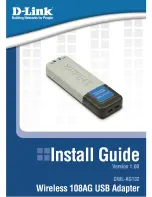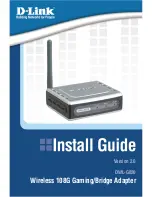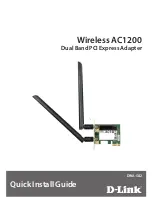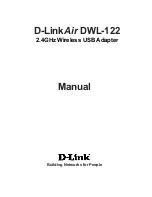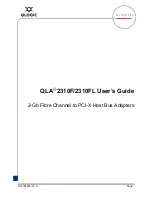
76
Managing user accounts
•
Uppercase
Specifies the minimum number of uppercase alphabetic characters that must appear in the password.
The default value is zero. The maximum value must be less than or equal to the MinLength value.
•
Digits
Specifies the minimum number of numeric digits that must appear in the password. The default value is
zero. The maximum value must be less than or equal to the MinLength value.
•
Punctuation
Specifies the minimum number of punctuation characters that must appear in the password. All
printable, non-alphanumeric punctuation characters, except the colon (:), are allowed. The colon
character is not allowed because it is incompatible with Web Tools. The default value is zero. The
maximum value must be less than or equal to the MinLength value.
•
MinLength
Specifies the minimum length of the password. The minimum can be from 8 to 40 characters. New
passwords must between the minimum length specified and 40 characters. The default value is 8. The
maximum value must be greater than or equal to the MinLength value.
•
Repeat
Specifies the length of repeated character sequences that will be disallowed. For example, if the
“repeat” value is set to 3, a password “passAAAword” is disallowed because it contains the repeated
sequence “AAA”. A password of “passAAword” would be allowed because no repeated character
sequence exceeds two characters. The range of allowed values is 1 – 40. The default value is 1.
•
Sequence
Specifies the length of sequential character sequences that will be disallowed. A sequential character
sequence is defined as a character sequence in which the ASCII value of each contiguous character
differs by 1. The ASCII value for the characters in the sequence must all be increasing or decreasing.
For example, if the “sequence” value is set to 3, a password “passABCword” is disallowed because it
contains the sequence “ABC”. A password of “passABword” would be allowed because it contains no
sequential character sequence exceeding two characters. The range of allowed values is 1 – 40. The
default value is 1.
The following example shows a password strength policy that requires passwords to contain at least 3
uppercase characters, 4 lowercase characters and 2 numeric digits; the minimum length of the password is
9 characters.
passwdcfg --set -uppercase 3 -lowercase 4 -digits 2 -minlength 9
Password history policy
The password history policy prevents users from recycling recently used passwords, and is enforced across
all user accounts when users are setting their own passwords. The password history policy is enforced only
when a new password is defined.
Specify the number of previous password values that are disallowed when setting a new password.
Allowable password history values range between 1 and 24. The default value is 1, which means the
current and one previous password cannot be reused. The value 2 indicates that the current and the two
previous passwords cannot be used (and so on, up to 24 passwords).
This policy does not verify that a new password meets a minimal standard of difference from previous
passwords; rather, it determines only whether a newly-specified password is identical to one of the
specified number (1--24) of previously used passwords.
The password history policy is not enforced when an administrator sets a password for another user;
instead, the user’s password history is preserved and the password set by the administrator is recorded in
the user’s password history.
Password expiration policy
The password expiration policy forces expiration of a password after a configurable period of time, and is
enforced across all user accounts. A warning that password expiration is approaching is displayed when
the user logs in. When a user’s password expires, he or she must change the password to complete the
authentication process and open a user session. You can specify the number of days prior to password
Summary of Contents for A7533A - Brocade 4Gb SAN Switch Base
Page 1: ...HP StorageWorks Fabric OS 6 2 administrator guide Part number 5697 0016 Edition May 2009 ...
Page 24: ...24 ...
Page 99: ...Fabric OS 6 2 administrator guide 99 ...
Page 100: ...100 Managing user accounts ...
Page 118: ...116 Configuring standard security features ...
Page 164: ...162 Configuring advanced security features ...
Page 234: ...232 Installing and maintaining firmware ...
Page 268: ...266 Administering advanced zoning ...
Page 284: ...282 Configuring Enterprise class platforms ...
Page 292: ...290 Routing traffic ...
Page 294: ...292 Interoperability for merged SANs ...
Page 302: ...300 Configuring the Distributed Management Server ...
Page 334: ...332 iSCSI gateway service ...
Page 340: ...338 Administering NPIV ...
Page 407: ...Fabric OS 6 2 administrator guide 405 ...
Page 408: ...406 Using the FC FC routing service ...
Page 438: ...434 Administering extended fabrics ...
Page 460: ...456 Administering ISL trunking ...
Page 516: ...512 FICON fabrics ...
Page 526: ...522 Configuring and monitoring FICON Extension Services ...
Page 540: ...536 Configuring the PID format ...
Page 544: ...540 Understanding legacy password behavior ...
Page 546: ...542 Mixed fabric configurations for non merge SANs ...
Page 550: ...546 Migrating from an MP Router to a 400 MP Router ...
Page 558: ...554 Inband Management ...
Page 572: ...568 ...
































